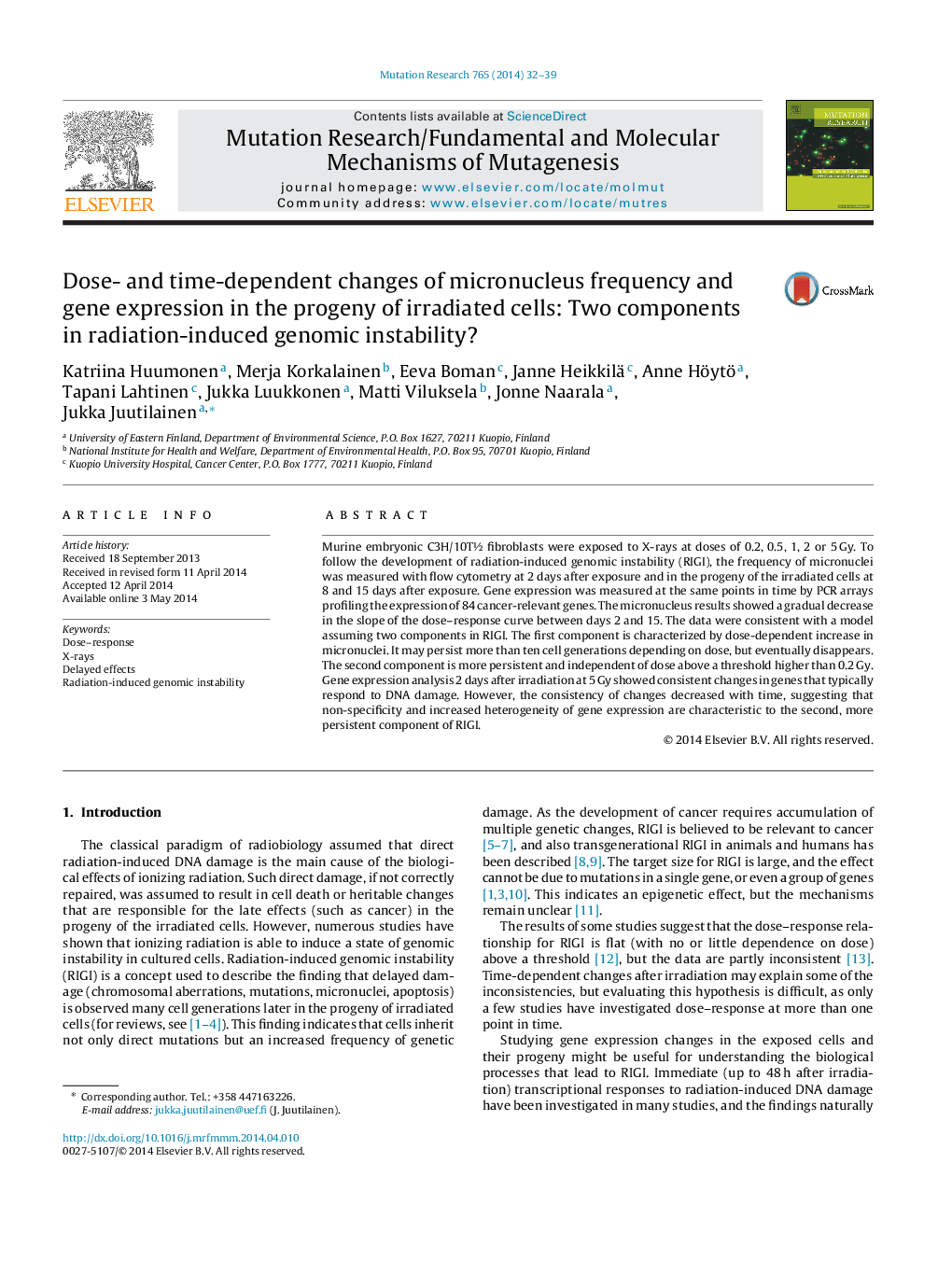| Article ID | Journal | Published Year | Pages | File Type |
|---|---|---|---|---|
| 2146332 | Mutation Research/Fundamental and Molecular Mechanisms of Mutagenesis | 2014 | 8 Pages |
•Development with time of radiation-induced genomic instability (RIGI) was studied.•Dose–response of micronuclei showed marked time-dependent changes.•A new model assuming two components in RIGI was found to fit with the data.•The persisting component of RIGI seems to be independent of dose above a threshold.•Increasing heterogeneity was characteristic to delayed gene expression changes.
Murine embryonic C3H/10T½ fibroblasts were exposed to X-rays at doses of 0.2, 0.5, 1, 2 or 5 Gy. To follow the development of radiation-induced genomic instability (RIGI), the frequency of micronuclei was measured with flow cytometry at 2 days after exposure and in the progeny of the irradiated cells at 8 and 15 days after exposure. Gene expression was measured at the same points in time by PCR arrays profiling the expression of 84 cancer-relevant genes. The micronucleus results showed a gradual decrease in the slope of the dose–response curve between days 2 and 15. The data were consistent with a model assuming two components in RIGI. The first component is characterized by dose-dependent increase in micronuclei. It may persist more than ten cell generations depending on dose, but eventually disappears. The second component is more persistent and independent of dose above a threshold higher than 0.2 Gy. Gene expression analysis 2 days after irradiation at 5 Gy showed consistent changes in genes that typically respond to DNA damage. However, the consistency of changes decreased with time, suggesting that non-specificity and increased heterogeneity of gene expression are characteristic to the second, more persistent component of RIGI.
